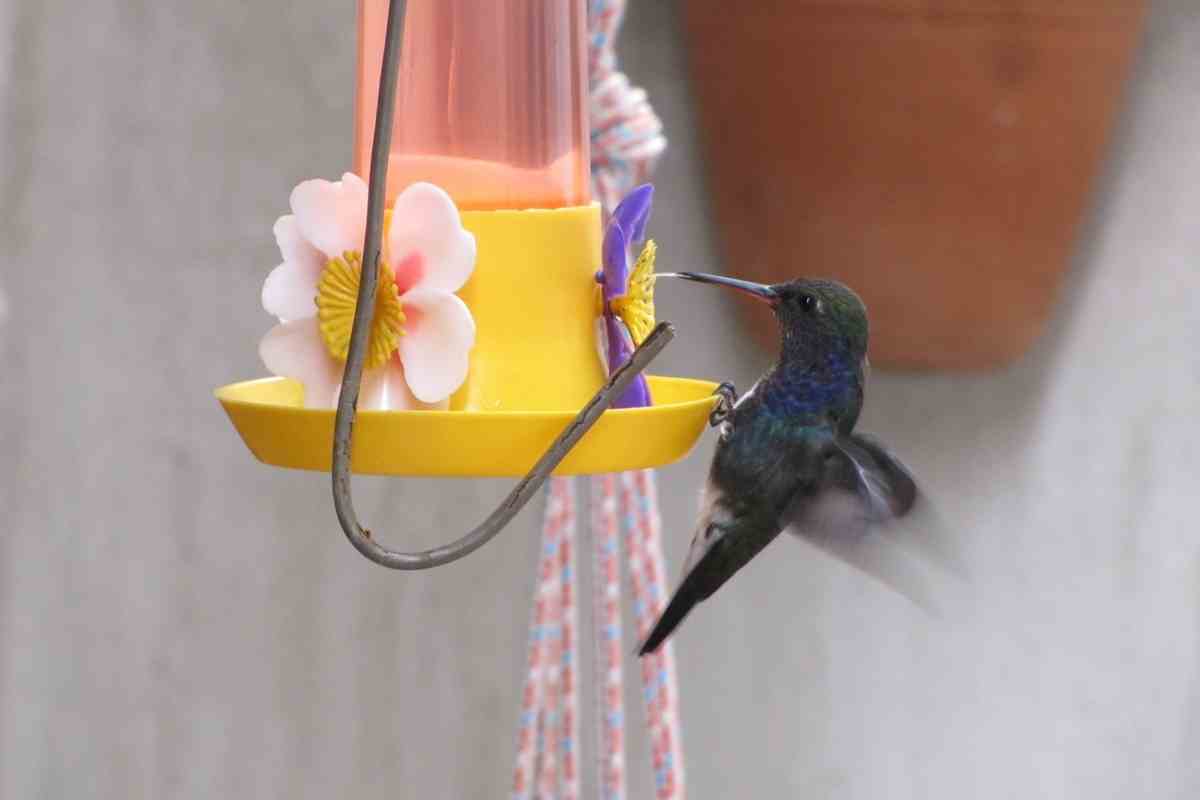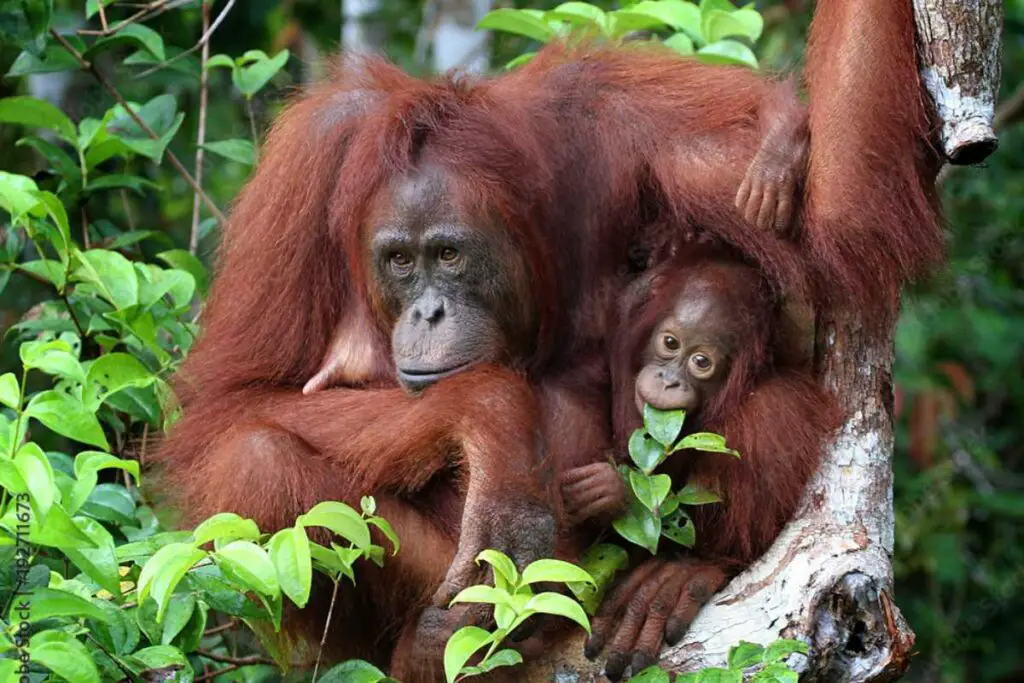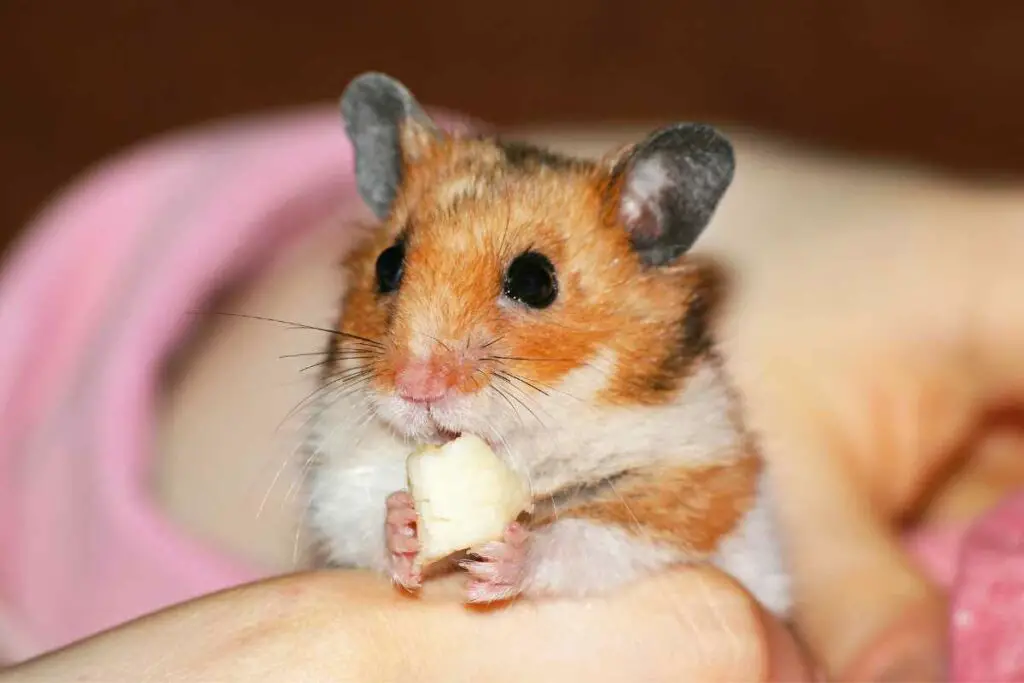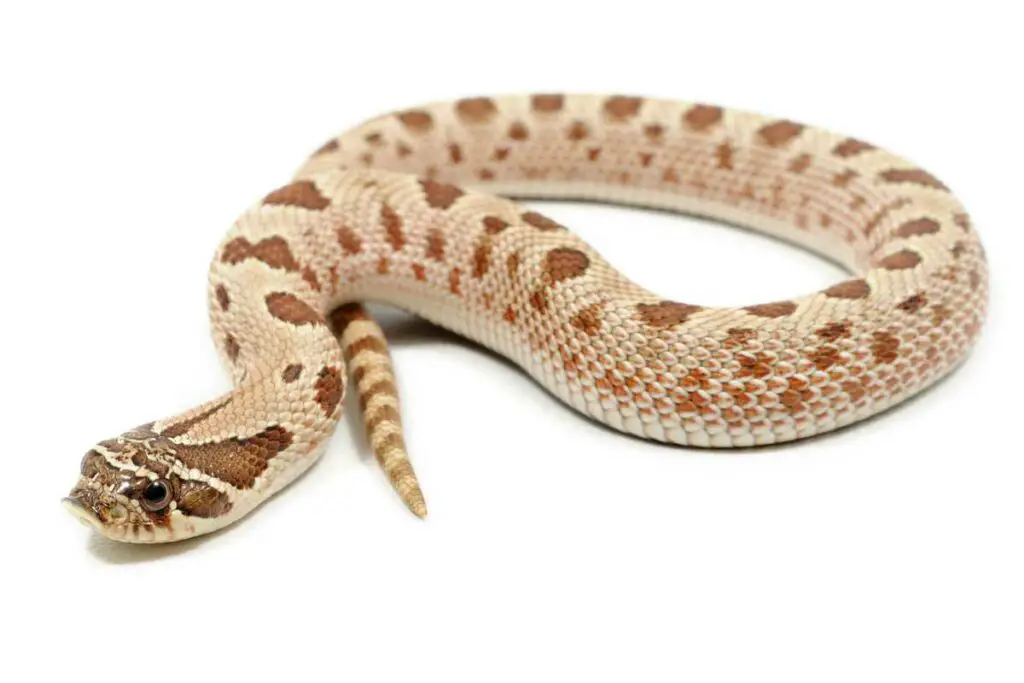Hummingbirds have the ability to drink warm nectar, but if it is too hot to the touch for a human it is too hot for a hummingbird to drink.
This is not the only issue when it comes to caring for hummingbirds in the summer months.
Deadly toxins and bacteria can form in a feeder that is too hot in as quickly as 24 hours.
In This Article: We’ll break down the best ways to care for them during summer.
Table of Contents
What Happens to Nectar Left in the Summer Sun?
An artificial feeder left in direct sunlight can turn the sugar water quickly.

Hummingbirds have no sense of smell and cannot tell if the water has gone bad.
If they drink this water they can become ill and die in rapid succession.
It’s important to not leave your artificial feeder unattended in the summer months, so be sure to clean them daily.
What Are Some Red-Flags of Bad Nectar?
As this article might infer, if the feeder is hot to the touch it is best to replace it.
If there is condensation inside the feeder but no nectar, and if the nectar appears to be cloudy, thick, and/or syrupy.
If bees are starting to converge on your feeder this is also a helpful sign that the nectar is starting to go bad in terms of hummingbird food.
How Often Should You Change the Water?
Depending on the temperature you will need to swap out the nectar accordingly.
The recommended timing is as follows.
| Temp in Shade (in Fahrenheit) | Frequency of Cleaning/Refill |
|---|---|
| 61-70° | 4-5 Days |
| 71-80° | 3 Days |
| 81-85° | 2 Days |
| 86° and Up | Daily |
If you cannot keep up with the recommended cleaning times, try planting flowers that hummingbirds can naturally eat from such as cardinal flowers or salvia.
How Do You Keep a Hummingbird Feeder Cool?
A few ideas on keeping the nectar safe and cool for hummingbirds are as follows.
Keep the Feeder in the Shade
Any feeder in the shade will maintain the same ambient temperature of its surroundings and reduce any risk from baking in the sun.
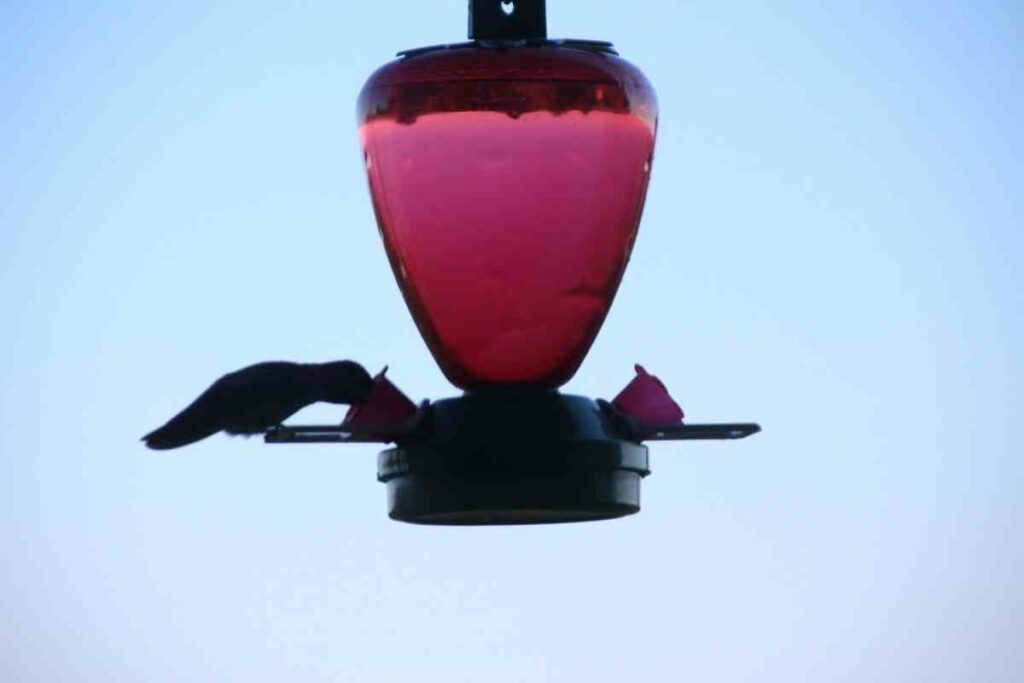
This is a good rule of thumb even outside the summer months.
Refill with Just the Right Amount of Nectar
It can be tempting to fill the feeder and walk away but try to keep the level down to the amount you know if used in a day.
You can make a large batch of nectar and keep it stored in your fridge until you need to use it.
Make Nectar Ice Cubes!
With the extra sugar water you’ve made, make some into ice cubes to add to the nectar.
As they melt they will replenish the supply and will keep the nectar cooler longer.
You can either fill the feeder with a combination of nectar and ice, or fill it simply with nectar ice cubes.
Invest in a Glass Feeder
The glass is a thicker barrier against the ambient temperatures which will reduce the chance of the nectar fermenting in the sun.
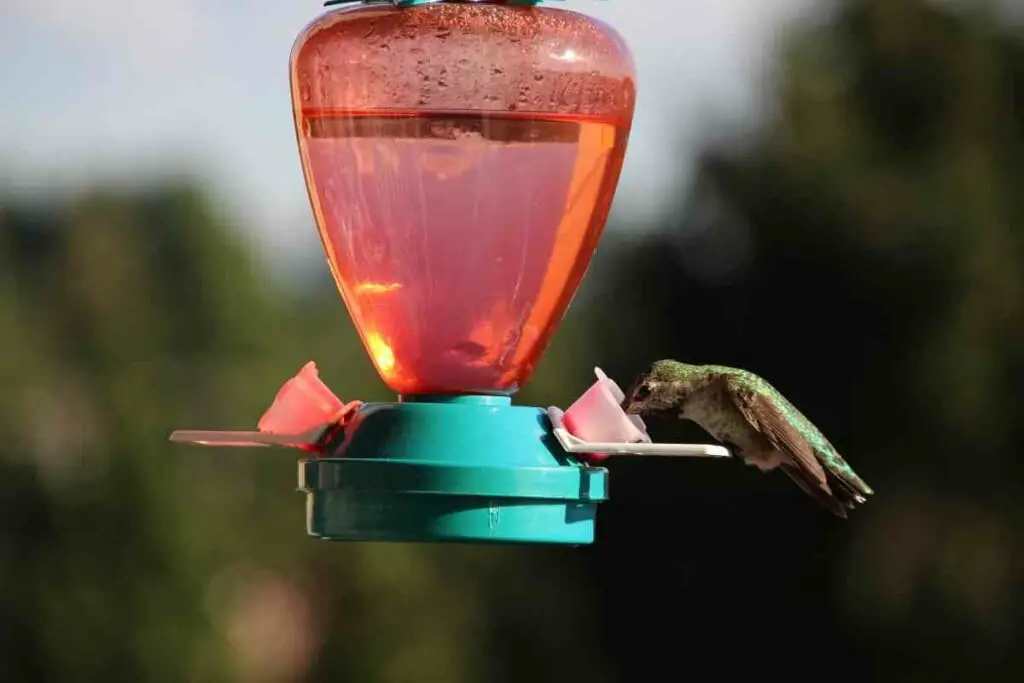
Glass feeders are especially recommended if you live somewhere that the temperature tends to say about 90° fahrenheit.
Wrap Your Feeder in Aluminum Foil
Covering your feeder in aluminum will help to reflect up to 98% of thermal radiant heat, as well as blocking UV rays.
All of this will help to reduce the heat within the feeder itself and slow fermentation.
It’s best to crumple the foil before wrapping it around the feeder.
Add an Insulation Sleeve to the Feeder
Adding this sleeve to the glass or plastic part of the feeder will help to keep the nectar cooler longer.
We tend to use these sleeves for our own beverages in the summertime so it makes sense that they will be helpful here.
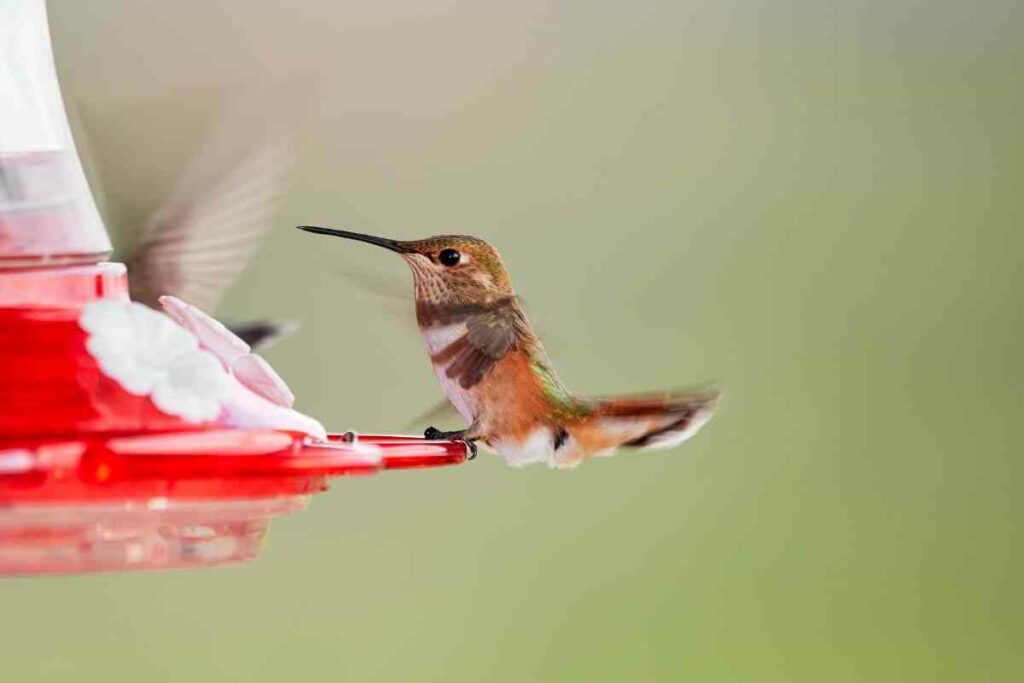
You can cut the bottom of the sleeve off and slip it easily over the cylinder of the feeder.
The color is also important, as white will reflect heat.
What Nectar is Recommended?
The best way to avoid any issue is to grow plants that provide natural nectar.
Preferably grow plants that are native to your region, as that will also help to encourage growth of the local flora.
Having a plant specifically for them will also help to prevent other insects from coming to the feeder.
If you don’t have the ability to plant things, homemade nectar is best.
What to be Wary of with Different Nectars
We mentioned earlier that bacteria can form in nectar that’s been heated.
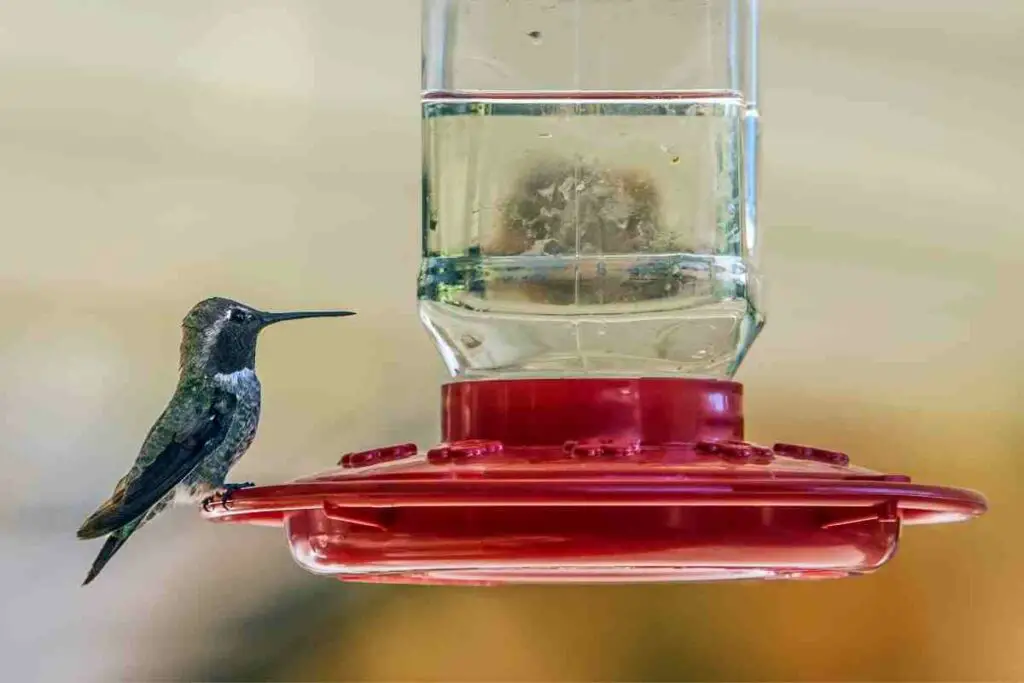
This can be exacerbated by the use of premade nectar that contains dyes or preservatives.
Those types of mixtures can add chemicals to an already delicate balance.
Keeping the nectars as natural as possible will help to ensure the health of the hummingbirds coming to visit you.
You can use white cane sugar in a ratio of 4 parts water and 1 part sugar.
Stay away from honey, syrups, or molasses.
In Conclusion
Hummingbirds can’t tell if the water before them has gone bad, so be sure to keep the nectar fresh.
If the nectar is exposed to direct sunlight it will heat even faster and foster bacteria that is harmful to hummingbirds.
You can help prevent these issues with several tactics; most importantly changing the nectar frequently.
You can also add nectar ice cubes to the feeder to keep it cool, and wrap the feeder in aluminum foil or an insulation sleeve.
Keep an eye on those temperatures and make sure you do your part to keep the little birds safe.

